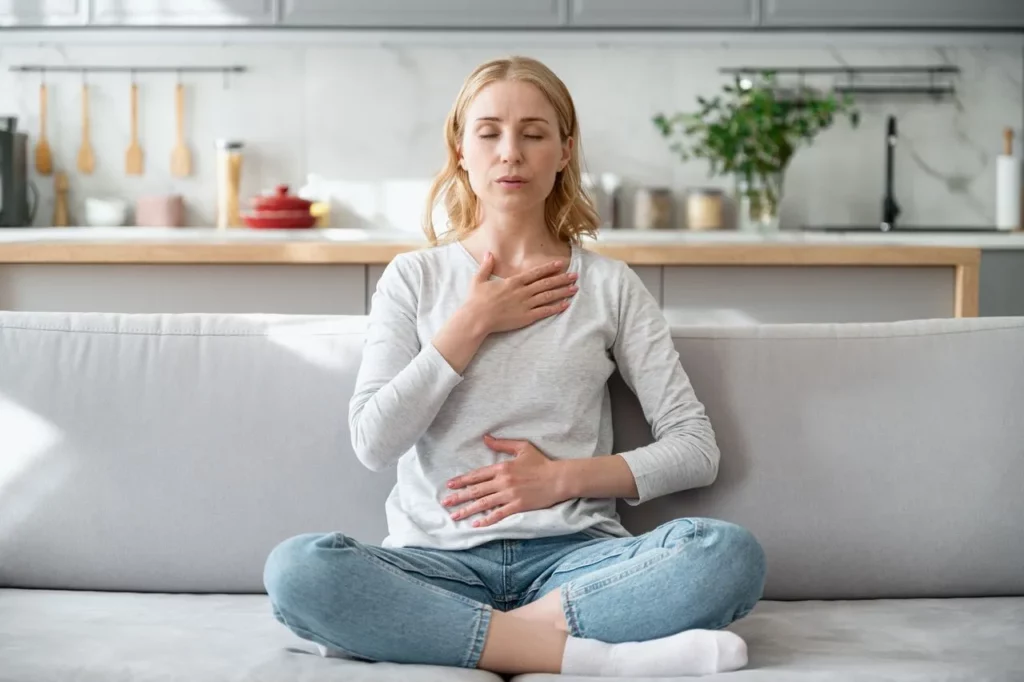The choice of therapy for anxiety depends on each person’s unique needs, symptoms, and preferences. Evidence shows that talk therapies, especially Cognitive Behavioral Therapy (CBT), are widely considered the most effective first-line treatment for most anxiety disorders, often complemented by other therapeutic approaches. Based on randomized controlled trials, CBT provides effective treatment for anxiety across various populations and severity levels. However, exploring various therapy types can help individuals find the right fit for their condition and lifestyle.

Home » What Is the Best Therapy for Anxiety?
Raven Fisher, LCPC
07 Jan, 2025
Anxiety presents in various forms, each with distinct signs. Physical symptoms of anxiety often include muscle tension, digestive issues, increased heart rate, and shortness of breath. Common anxiety disorders include:
Therapy provides a safe, supportive environment to explore the causes of anxiety, develop healthy coping skills, and change unhelpful thinking patterns. A qualified mental health provider can assess your specific condition and recommend psychological therapy options to treat anxiety effectively. Techniques like CBT help individuals identify and challenge anxious thoughts, while approaches such as mindfulness increase present-moment awareness and reduce stress. Therapy empowers people to manage psychological symptoms, improve functioning, and regain control over their lives.
Treating anxiety disorder requires addressing both negative thoughts and physical manifestations of anxiety, creating a comprehensive approach to healing. Anyone experiencing persistent worry, regardless of age or background, can benefit from therapy. Whether symptoms are mild or severe, early intervention can prevent anxiety from worsening and help individuals build resilience. Therapy is suitable for adolescents, adults, and people from diverse backgrounds.
CBT is the most researched and widely used therapy for anxiety. It helps individuals identify, challenge, and change unhelpful thought patterns and behaviors that fuel this condition. Research in clinical neuroscience has validated CBT as an effective treatment for anxiety, demonstrating measurable changes in brain function following successful treatment. CBT is structured, goal-oriented, and typically short-term, making it accessible and effective for many. Learn more about individual therapy at Nave Wellness Center.
MBCT combines cognitive therapy techniques with mindfulness practices. Relaxation techniques and stress management are key components that help individuals manage anxiety symptoms in their daily lives. It teaches individuals to become more aware of their thoughts and feelings and to respond to them with compassion and non-judgment. Discover mindfulness-based approaches at Nave Wellness Center.
EMDR is a structured therapy developed for trauma and post-traumatic stress disorder (PTSD), but is increasingly used for treating other conditions. Anxiety disorders tend to improve with EMDR when they’re connected to specific distressing memories or experiences. It involves guided eye movements to help process distressing memories and reduce anxiety symptoms. Explore EMDR therapy options at Nave Wellness Center.
There is no single answer to what therapy is best for anxiety, as the optimal approach depends on the specific type of anxiety disorder, the severity of symptoms, and personal preferences. Selective serotonin reuptake inhibitors (SSRIs) are sometimes prescribed alongside therapy when treating anxiety disorders with significant symptoms. However, CBT is considered the gold standard for many anxiety conditions, supported by robust scientific evidence. Other therapies may be more suitable depending on an individual’s unique situation. Here is a more detailed breakdown:
Find out about group therapy for anxiety at Nave Wellness Center.
Learn about adolescent therapy options at Nave Wellness Center.
Anxiety is manageable with the right strategies and support. Online therapy has become an increasingly accessible option for those seeking effective treatment for anxiety. It allows people to manage busy schedules or transportation limitations. Periodic therapy “tune-ups,” ongoing self-care, and a proactive approach to stress can help maintain progress and prevent relapse.
At Nave Wellness Center, accessing therapy for anxiety is simple and stress-free. We specialize in addressing mental health issues ranging from mild worry to complex anxiety-related disorders. Our center provides various services, including individual therapy, adolescent therapy, mindfulness, group therapy, EMDR, and online therapy. Whether you prefer in-person or virtual sessions, Nave Wellness Center is dedicated to helping you find the right therapeutic approach for your unique needs.